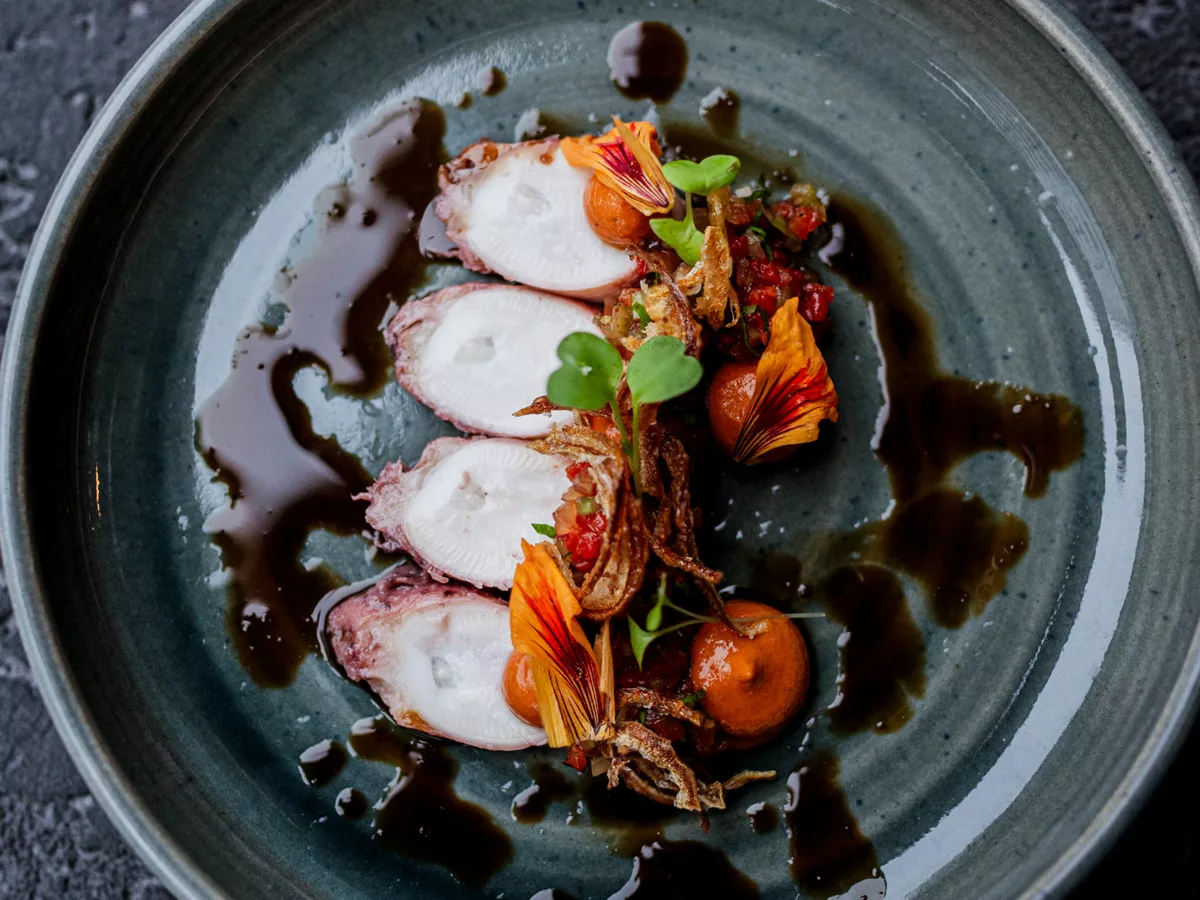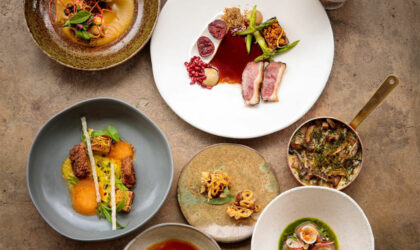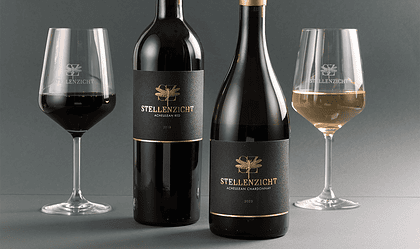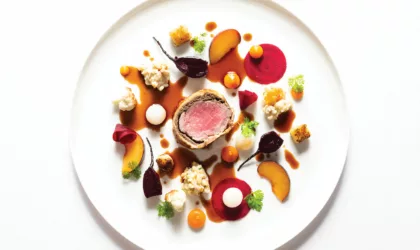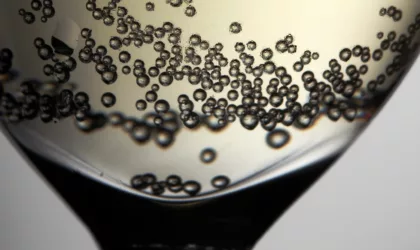Jason Kosmas massages it tenderly, his skilled chef’s hands caressing the large slab of yellowtail with something like affection. Its oils are all over his fingers, something that doesn’t bother him in the least as he speaks of the meat’s improving textures and flavours intensifying with age, elements that would ultimately add depth to the dishes the fish might star in.
Kosmas is tall, a commanding presence at The Pot Luck Club, the Woodstock restaurant where he’s been head chef for almost five years. His piercing eyes are like those of an Arctic fox, his arms crowded with tattoos testifying to the awe he feels for aquatic life: swimming up and down his arms are a cuttlefish, a lionfish, a dusky kob, leopard shark and grouper. There’s a nautilus, an octopus, and a turtle, too. And a galjoen, South Africa’s national fish.
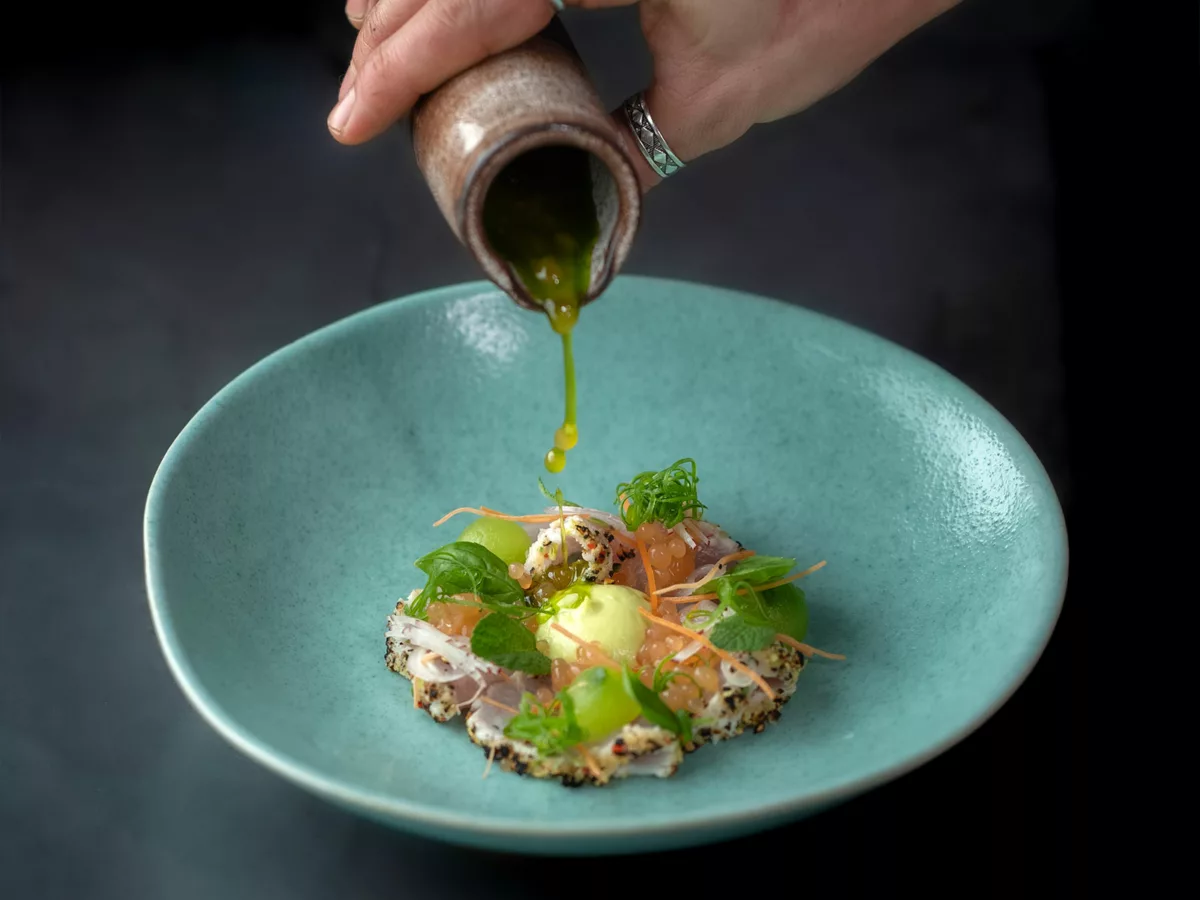
You might spot Kosmas from your table, gazing out from the open kitchen, tracking diners’ reactions to dishes he’s sent out. It’s a relatively small space as restaurants go, yet it feels expansive. Perhaps it’s a trick of the location. As you glide up in the elevator from the Old Biscuit Mill’s ground level, it’s always a treat arriving to those high-angle 270-degree panoramas showcasing mountains, city, harbour… it’s kind of like the ‘all Cape Town’ experience.
Another reason The Pot Luck Club feels so much bigger than its physical dimensions is perhaps the enormity of flavours coaxed onto the plate in that kitchen Kosmas oversees. There are dishes that, once savoured, you will never forget. Like the sliders, basically miniature fish burgers, but an easy contender as the ultimate death-row meal.
Other instantly memorable dishes? An enthralling ‘taco 2.0’ stacked with line fish and black bean purée. And a simply seared cut of tuna served with tom yum broth. The delivery with smoked fish bone miso and walnut XO is another triumph.
While there are perennial favourites, it’s also a place of ongoing renewal and reinvention. Which is where dry-ageing comes in.
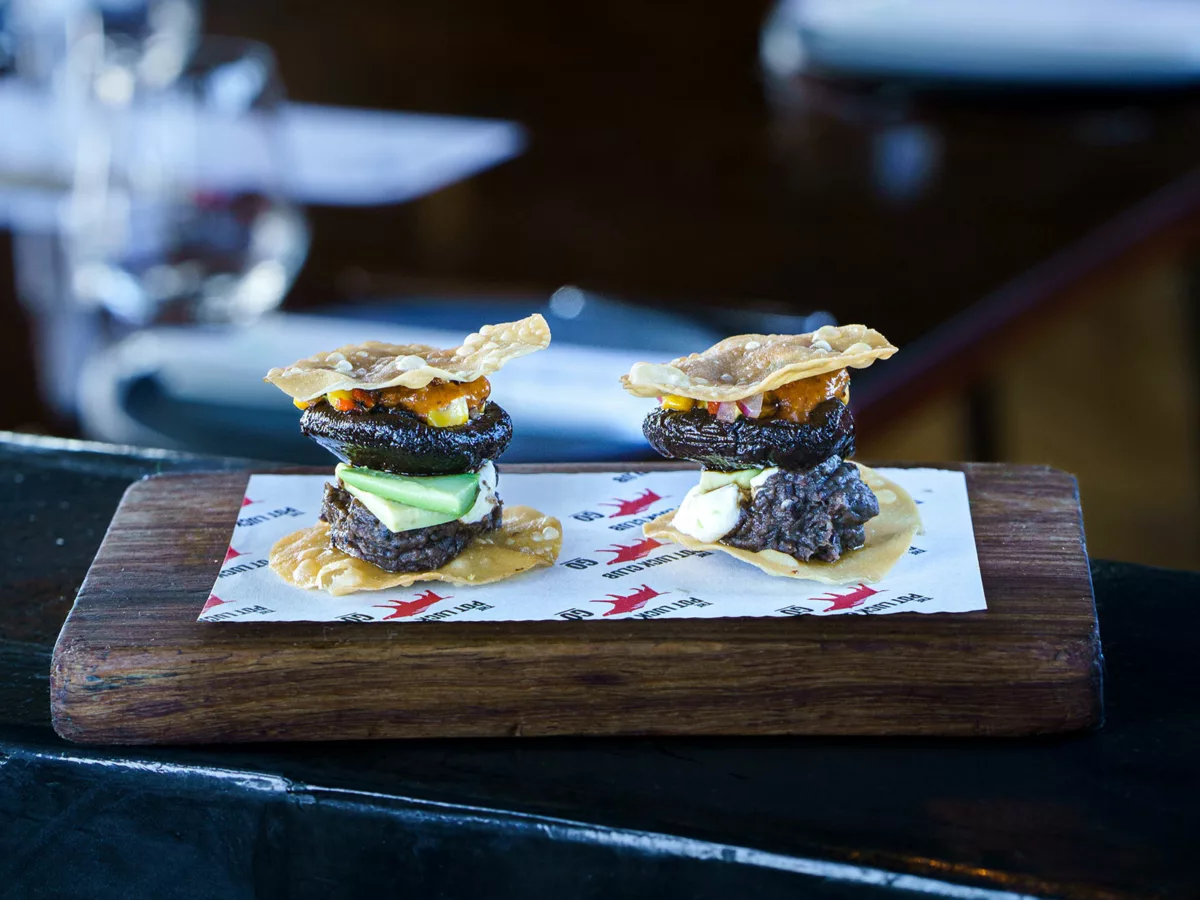
Kosmas explains that, when he manages to get yellowfin tuna in, the time it spends in the ageing cabinet transforms it into the ocean-born equivalent of Wagyu, that most prized marbled beef. ‘The belly, or otoro, has a high fat content, so we can age it for longer, up to 21 days, and the result is impeccable.’
He wipes his hands, fragrant with fish, on his cloth, and asks one of his chefs to return the yellowtail to its temperature-controlled cabinet, the way you’d return precious jewels to the safe.
‘Of the fish we dabble in, yellowtail is a great one, and can be aged between five and ten days, resulting in a beautiful, softly textured game fish with a super-clean flavour profile,’ Kosmas said. ‘It melts in your mouth.’
The dabbling is simple enough if done properly. Keeping the fish in a low-temperature, low-humidity environment, reduces moisture content, prevents rotting. ‘Fattier fish age better. Swordfish, which is super-fatty and really moist around the loins, ages really well – seven to nine days on the bone with skin on. The result is a firm piece of sword loin which absorbs incredible flavour from the fire.’
He explains that ageing ‘relaxes the protein structure of the meat to give a softer mouthfeel and allows it to cook better over charcoal’.
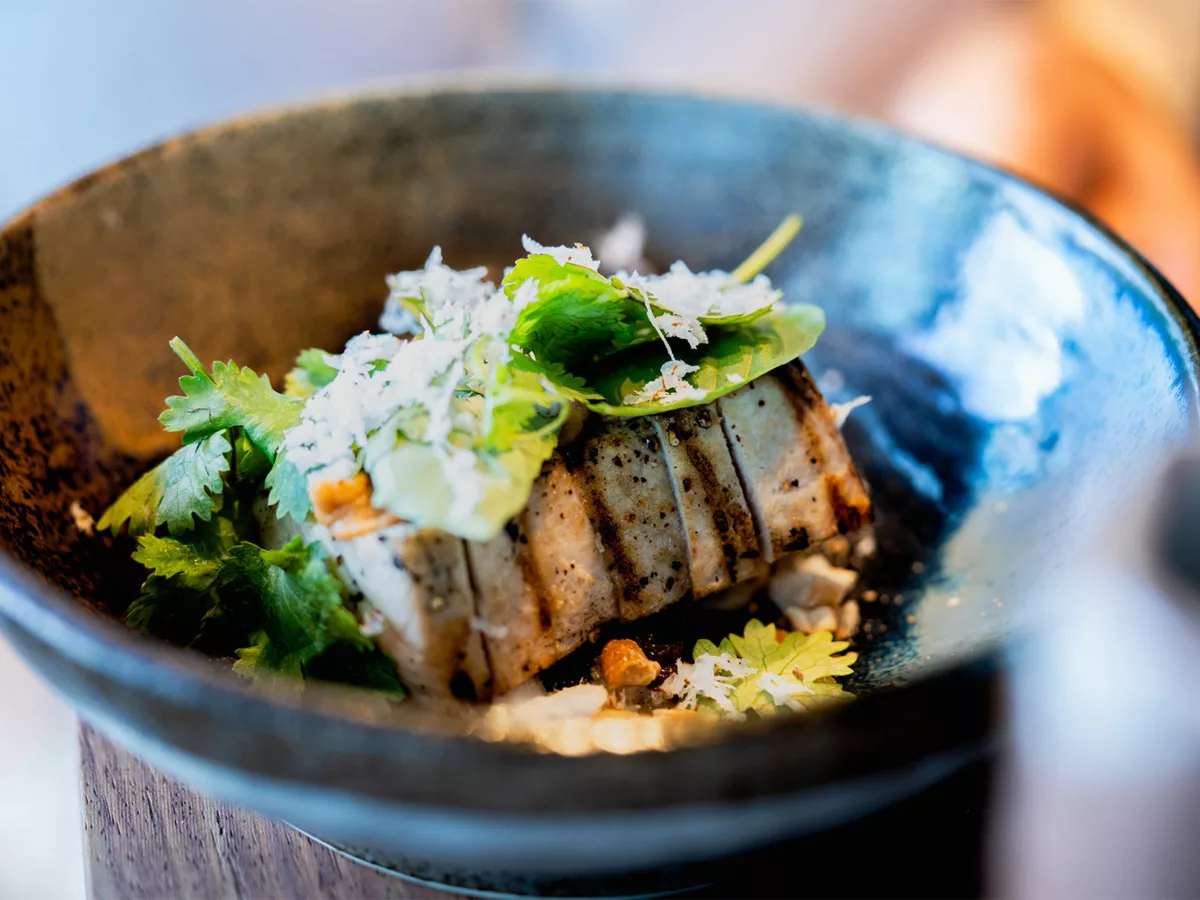
Dry-ageing opens up the scope and scale of what can be done with fish in the kitchen. Among its pioneers is Sydney-based chef, Josh Niland, a master of fish butchery, hailed for his nose-to-tail approach to seafood.
At his restaurant, Saint Peter, Niland has popularised fish offal, whole-fish cookery and dry-ageing; his recipe tome, The Whole Fish Cookbook, punts previously far-fetched recipes such as fish black pudding, swordfish bacon and guanciale made from fish jowls and cheeks.
In many ways he’s done for whole-fish cooking what Fergus Henderson first did with land-grown animals 30 years ago at St John in London.
Niland’s push for this less wasteful treatment of seafood has helped boost awareness of the fact that less than half of all harvested seafood actually gets eaten by humans. Almost 60% of catch is thrown away or ground into fishmeal; much of that is offal and bones and heads, all of which – save gall bladders – Niland has found uses for.
Niland is slightly evangelical, says if an animal gets killed, chefs should commit to using the whole thing.
It’s a guiding principle for Kosmas, too. ‘Dry-ageing lengthens the lifespan of the fish out of water so helps prevent it from going off too quickly.’ It means less wastage.
Kosmas lives (and cooks) by the motto ‘everything in moderation’. It’s an attitude he says he shares with people he works with. ‘Hopefully more restaurants will start to realise that our oceans aren’t an endless pit of fish. And that we chefs need to be mindful.’
Such mindfulness is spreading. Across town, in the burgeoning East City Precinct, a short distance from where the world’s first hemp high-rise building is nearing completion, former Pot Luck Club chef Isca Stoltz heads up Galjoen, South Africa’s first restaurant dedicated to local, sustainable seafood.
Like Kosmas, Stoltz says her connection with fish is via a bond with the ocean, something that for her was forged on childhood holidays in Mozambique where she remembers seeing piles of shellfish on returning boats and tasting honest, local, catch-of-the-day fish from seafood markets.
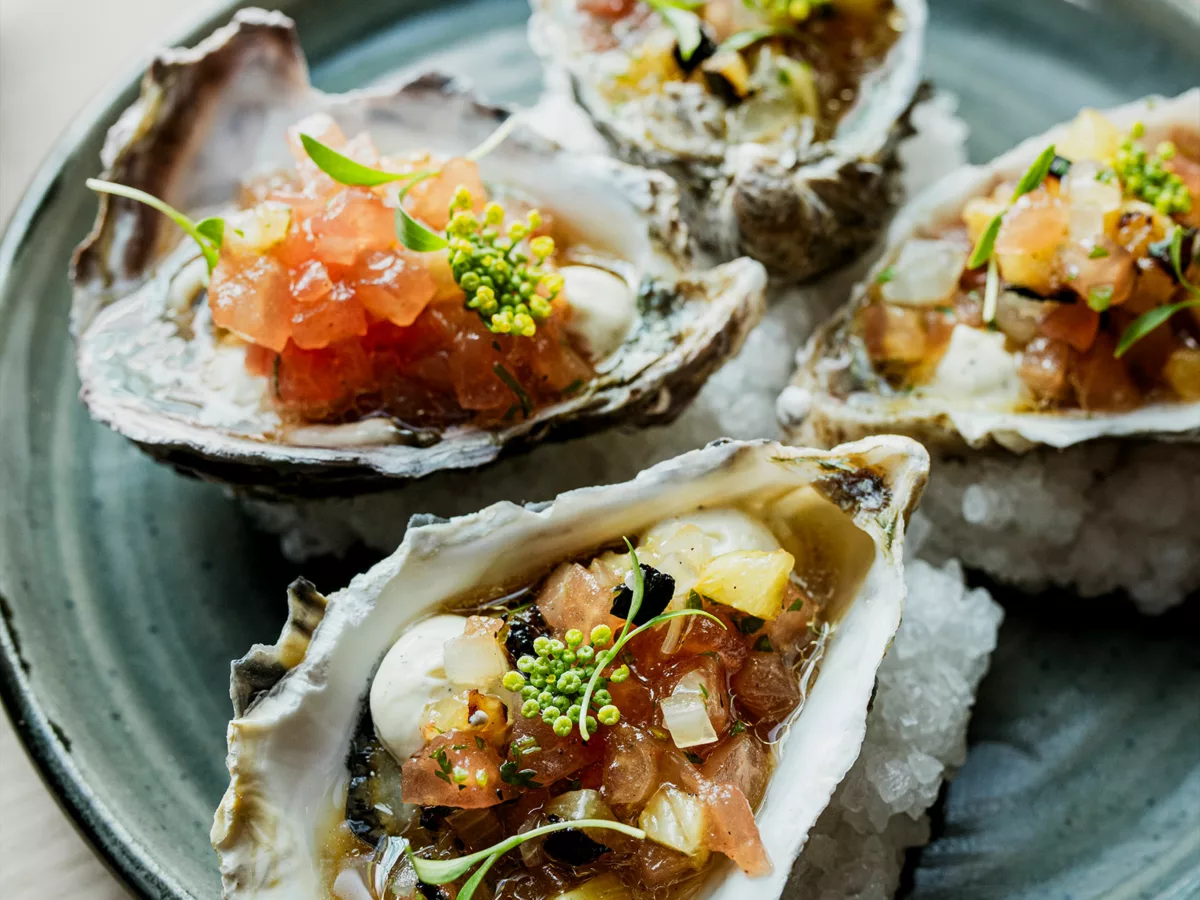
Strangely, genuinely local seafood can prove elusive in Cape Town. Which prompted Galjoen’s core tenet – hitting permanent pause on imported produce. They’ve denounced Norwegian salmon, eschew Argentinean calamari and sea bass, and buy only from ethical local suppliers and artisanal fishers.
It means a more adventurous approach to cooking, a chance to broaden diners’ horizons, introduce them to katonkel and chub mackerel, maybe skipjack tuna, Cape bream and even redlip mullet, known up and down our coast as haarders, but seldom seen in restaurants.
The restaurant’s namesake galjoen is a no-no, though. Our national fish is on SASSI’s red-list, the idea being to spark conversation about ocean conservation.
Stoltz says Galjoen is firmly in the camp of minimising wastage by utilising as much of the animal as possible.
That said, food preparation takes account of diners’ potential fastidiousness. Like Niland’s HQ in Sydney, Galjoen is not a restaurant where the food feels like a dare. Nothing like eyeballs gawking at you, fishy entrails slivering across the table. Instead, greatness is achieved through simplicity.
‘Our food must be true to itself,’ says Stoltz. ‘What you’ll get here are simple, nostalgic flavours: we braai fish over coals, we serve sashimi, we serve tataki, we poach seafood in its own liquid or in a bokkom broth. If you are looking for fine dining and you want me to pipe a fish mousse into a fish mould after it’s undergone sous vide for 16 hours at 35 degrees and then gets sprayed to look like a live fish, you are looking in the wrong spot.’
Stoltz doesn’t think she’s doing anything groundbreaking, but admits that she’s pleasantly challenged to come up with a new menu every month featuring only local seafood. Amongst those ‘honest, authentic-tasting’ dishes being imagined for this summer, ‘you can expect a curried fish sosatie and roti, abalone broth with seaweed, and stuffed Cape Hope squid’.
Does working with fish, thinking about it 24/7, change a person? ‘OMG, yes!’ Stoltz says. ‘I pretty much am a fish now. I wake up in the middle of the night with crazy recipe ideas. I have to write them down or talk about them immediately. My fiancé probably thinks I’m bonkers.’
But bonkers is possibly a good thing. That’s how you make waves, inspire change. After all, it wasn’t by going with the flow that Josh Niland got the world’s leading chefs to sit up and pay attention.
by Keith Bain
